
Issue 072
February 2011
Most mixed martial artists are nothing of the sort says top trainer Greg Nelson. He tells you how to get those ancient skills in your MMA game.
No one’s ever said MMA fighters can only use ‘the big three’ martial arts. Brazilian jiu-jitsu, wrestling and Muay Thai might form the backbone of the sport but there are thousands of years of martial arts knowledge out there to help thicken a modern warrior’s fight-ending repertoire.
Famed MMA trainer Greg Nelson, who had UFC title success via heavyweight Brock Lesnar and lightweight Sean Sherk, reveals there’s a wealth of material to absorb from lesser-observed arts like jeet kune do, maphilindo silat, krabi krabong, savate, kali and escrima. The list (of which Greg is deeply studied in all entries) could go on. It’s this approach that has helped see him coach so many fighters to victory in MMA at his Minnesota Martial Arts Academy. Essentially, taking up a new, more unusual martial art might raise your skills to a height no one else can match.
Philosophy
According to Nelson, the key to his philosophy lies in Bruce Lee’s famous statement: “Absorb what is useful, disregard what is useless, add what is uniquely your own.” Bruce Lee, aside from becoming a world-famous martial arts actor, created jeet kune do in 1967. It’s a discipline incorporating different kinds of striking and grappling. Essentially, it was MMA before MMA existed.
“You’re going after everything,” explains Greg. “Bruce, and Dan Inosanto [Lee’s primary student], didn’t just look at the techniques, they’d look at the concepts behind something, the mentality. They may not have taken a single technique from some arts but the strategy could be unique and they’d say, ‘Ah, that’s brilliant.’ We can do the same thing here because in a lot of our drills for MMA you’ll find Filipino panantukan, dumog and elements of silat. If I didn’t have that background, those elements wouldn’t be there. I think it gives you a broad mindset.”
Some of the crossover skills you can take from traditional martial arts are referred to as ‘low percentage’ moves. These are additions to core skills and provide a depth beyond what’s typically needed in an MMA fight but still supplement your library. “Some of the sweeps and tricks from silat are things you can pull out of the hat. You’re in a bad predicament and you need something and there it is: the sweep you thought you’d never use. It gives you an edge here and there.”
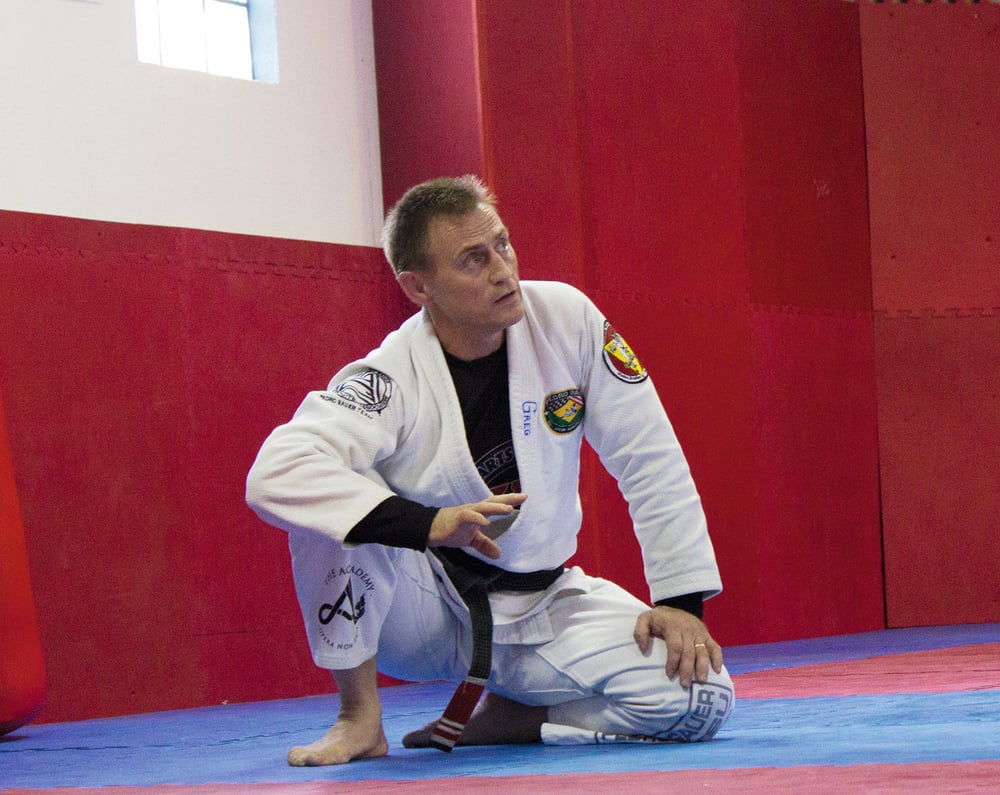
Training drills
The drills Greg uses at The Academy (Minnesota Mixed Martial Arts Academy’s new name) have been heavily influenced by his experiences with Filipino arts – which are often based around weapons. “With knives, sticks and swords, you can’t just fight each other, because you’ll get smashed up,” reveals Greg. “So we’ve developed a very unique set of drills and training methods that cross the boundaries into MMA.
“In an eight-week fight camp, we’re most likely specifically training for that fight. But once [the fighter is] done, they’re back in class working with a gi. By doing BJJ, Muay Thai, submission wrestling classes, even knife work, it takes some of the strain off their bodies and opens up their minds. The fighters knife spar for speed and footwork. They also spar with soft sticks, which move faster than hands do, so it can help train their eyes. If they’re heavy on their feet they’re going to get hit a lot so it makes them more mobile. Plus, without even thinking about it they’re developing their footwork. It’s also fun! Once in a while we’ll even play dodgeball! The guys have to move and duck. You have to get outside that traditional box.”
The trapping techniques used in jeet kune do can be massively helpful in a mounted ground ‘n’ pound scenario in MMA, and can form the basis of a highly effective drill. Trapping means grabbing or intercepting your opponent’s strikes to use them against him or her, often by, you guessed it, physically trapping their arms. “When you punch, a person will raise their hand to block,” says Greg (a technique demonstrated above). “If you don’t understand trapping you’ll just keep hitting arms, but with trapping you can turn that punch into a grab and pull [their] hand away. Now punch again. He’s going to lift his other hand, so grab that. There you go, you’ve trapped.” Try the drill slowly with a compliant partner, then build up speed.
Foundations First
If you do want to take up additional martial arts alongside your MMA training, in order to get “the true essence of the specific goal of an art” as Greg says, focus on the discipline independent of your MMA training first. Nelson’s a great believer in training the arts separately before trying to blend them. “If you go out there [and learn] to wrestle, you know that, no matter what, you can’t let yourself get put on your back. So you develop the ability to fight to the very, very end to stay on top. You won’t just fall onto your back to guard when things get a little rough. If you do go onto your back then you need to know the guard like everyone else but you’re going to make that the absolute last option. Likewise if you learn BJJ and you separate it and put on the gi and really understand it, then you’ll really develop those little flavors that jiu-jitsu has that wrestling doesn’t deal with. By putting on the gi you can slow the game down a little bit and your technique develops to a higher level.”
He dismisses the idea that training in gi-based BJJ means bad habits for MMA can be picked up with the good. “I don’t think the gi matters as long as you introduce punching, which immediately takes away all those fancy, under-the-leg, reaching moves they do in jiu-jitsu that are sport specific. Because if every time you reach under and your partner taps you on the face and says, ‘Uh, probably not the best move,’ you start to learn which elements of BJJ are for fighting and which ones are 100% sport oriented.”
For more information on training with Greg please contact (USA) [email protected] or (Europe) [email protected]
JEET KUNE DO-INSPIRED MMA TRAINING DRILL
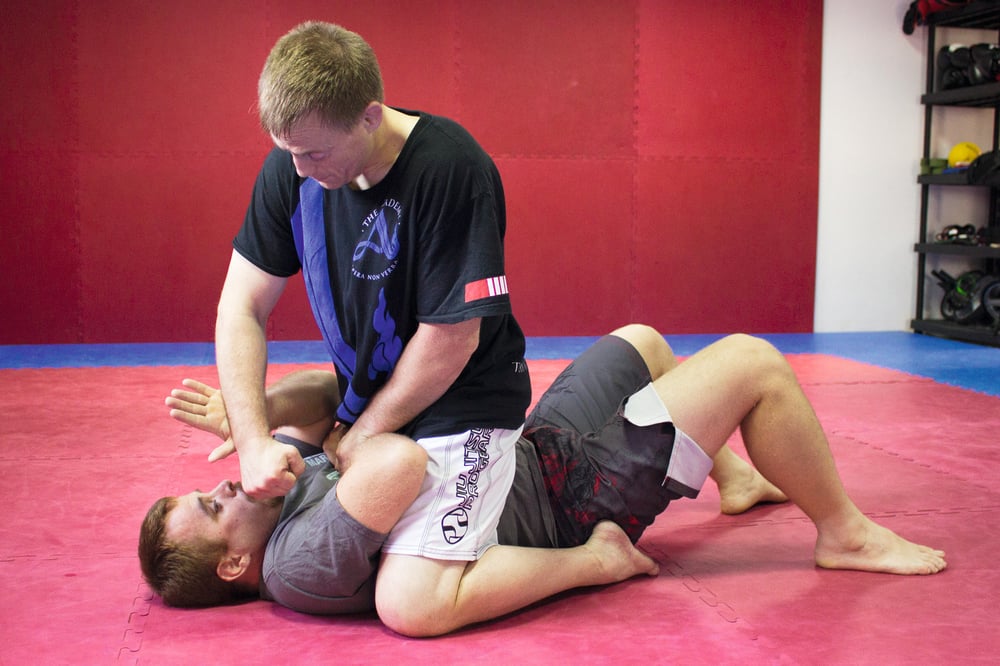
1 Punching the face from top during ground ‘n’ pound
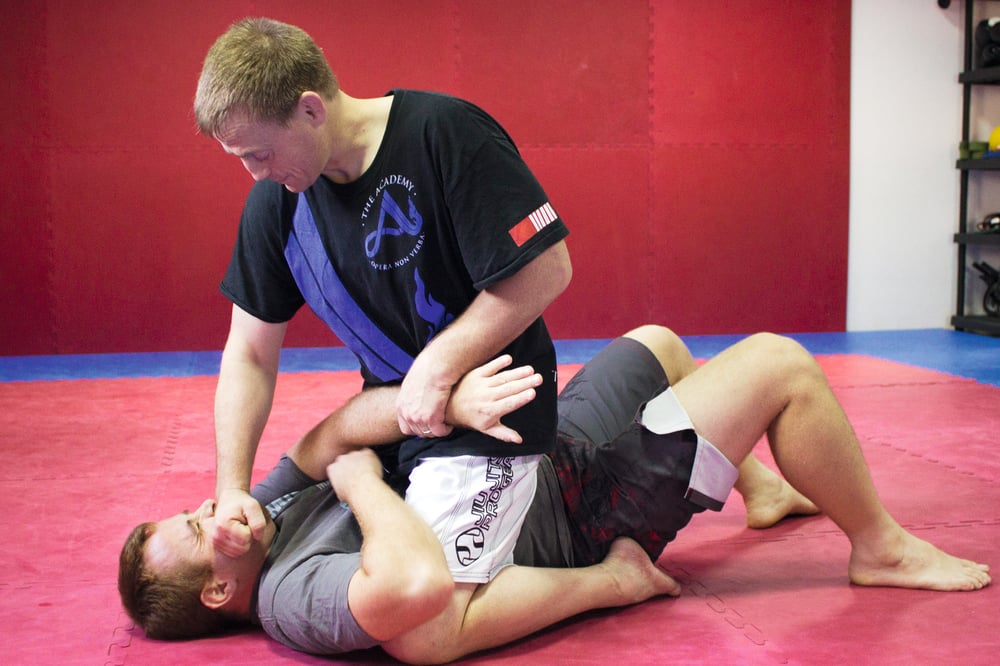
2 Opponent raises hand; grab wrist and punch with your free hand
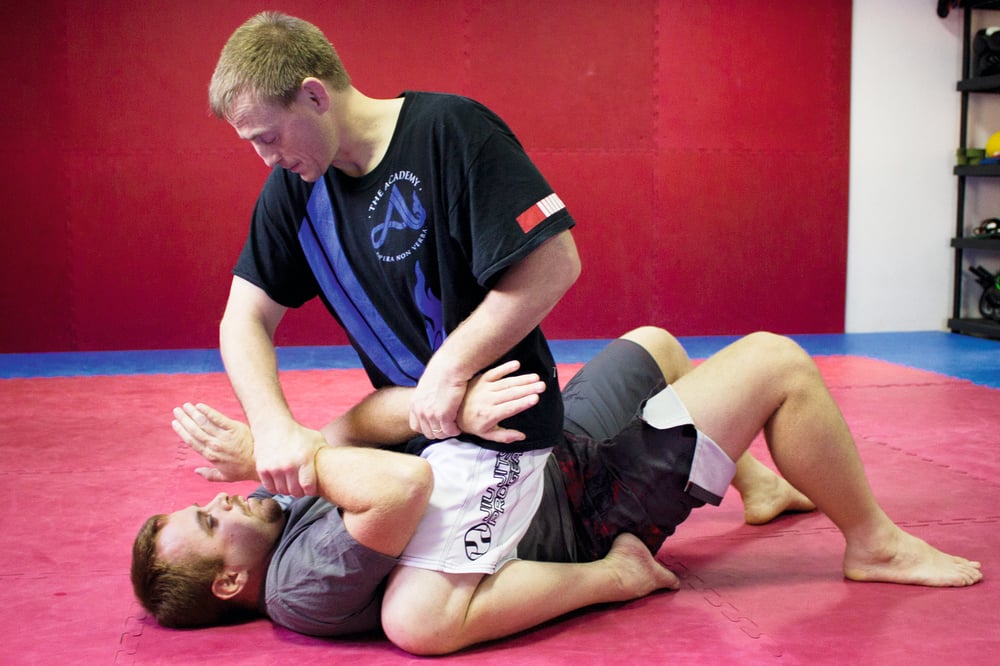
3 Opponent raises other hand; grab it and fold over his other arm, trapping it
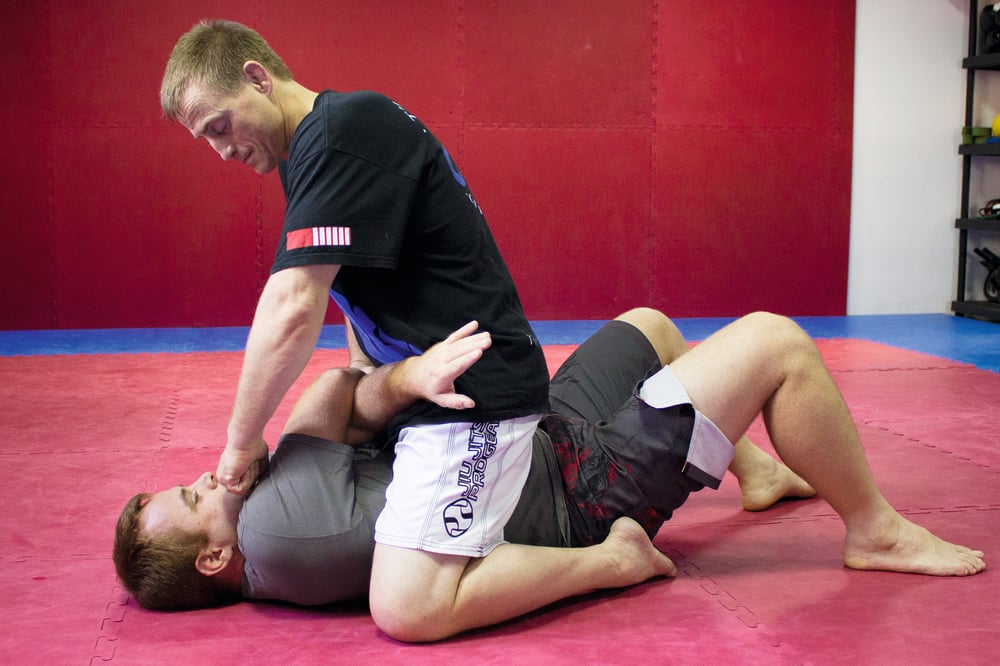
4 Continue ground ‘n’ pound attack with your free hand to unprotected face
WHAT'S WRONG WITH MOST MMA?
Greg: “MMA shouldn’t be called MMA, it should be called mixed fighting. Until you get to the highest levels you’ll see tons of fighters have an attitude. ‘I’m a fighter! I’m special! I’m different!’ I get sick of it. They just want to get in there and call themselves fighters. They really aren’t martial artists because they really don’t know what they’re doing. To go in a cage and fight you don’t need any kind of training at all. You might not win but you can go in there. In Muay Thai, BJJ or wrestling, if you do that you’ll get demolished. In MMA you get beat up, so what? You put it on your Facebook page that now you’re a cage fighter. It’s the one thing I don’t like. There’s still a lack of dignity, honor and integrity.”
...









